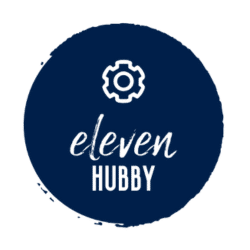Fed explores rate hikes and their impact on the economy

Fed explores rate hikes to combat inflation, leading to increased borrowing costs for consumers, potential shifts in spending habits, and significant impacts on everyday American finances.
Fed explores rate hikes as a central strategy to combat rising inflation. But what does this really mean for your wallet and the economy? Let’s dive deeper into this important topic.
Understanding the Fed’s mandate
Understanding the Fed’s mandate is crucial for grasping how monetary policy works in the U.S. The Federal Reserve, or the Fed, is the central bank of the country, and its primary goals are to promote maximum employment, stabilize prices, and moderate long-term interest rates.
These objectives are essential for ensuring a healthy economy. When consumers are employed and prices are stable, spending increases, which boosts economic growth. The Fed uses tools like interest rates to influence spending and investment.
Key Objectives of the Fed
The three main objectives of the Fed include:
- Maximum Employment: The Fed aims to create conditions that foster a strong labor market, helping individuals find jobs.
- Stable Prices: Keeping inflation in check is vital to maintain the purchasing power of money.
- Moderate Long-Term Interest Rates: By managing interest rates, the Fed influences the cost of borrowing and saving, impacting economic activity.
Through these goals, the Fed strives to create a stable financial environment. Understanding how the Fed operates helps us see its impact on our daily lives. For instance, when the Fed raises interest rates, borrowing becomes more expensive, which can slow down spending.
Additionally, the Fed gauges economic conditions to decide if they should adjust rates. Regular reports on inflation and unemployment help inform these decisions. Following their actions can provide insights into future economic trends.
The Importance of Transparency
Transparency in the Fed’s operations is equally important. The Fed regularly communicates its decisions and reasoning to the public. This helps build trust and manage expectations in the market. By understanding the Fed’s communication strategy, consumers and investors can make better informed decisions.
Overall, the Fed’s mandate plays a significant role in shaping the economy. By promoting maximum employment and price stability, it creates a favorable economic backdrop for all Americans. Monitoring the Fed allows us to comprehend how their policies can influence everything from job prospects to interest rates.
How rate hikes impact inflation
Understanding how rate hikes impact inflation is essential for grasping economic changes. When the Federal Reserve raises interest rates, it aims to slow down inflation, which can increase the cost of goods and services.
Higher interest rates make borrowing more expensive. As a result, consumers tend to spend less. This reduction in spending helps lower the demand for products, which can lead to stable or falling prices.
Direct Effects of Rate Hikes on Inflation
When rates go up, the following effects commonly happen:
- Reduced Consumer Spending: With higher borrowing costs, people are likely to delay purchases, impacting businesses.
- Slower Economic Growth: Businesses may hold off on expanding or hiring, which can slow down overall economic growth.
- Lower Demand for Loans: Higher rates discourage people and companies from taking loans, leading to less investment.
This cycle can help keep inflation in check. If businesses know demand will drop, they are less likely to raise prices.
Lower demand means fewer price increases. This relationship creates a balancing act that policymakers must navigate. It’s important to control inflation without stunting economic growth. Monitoring the inflation rate alongside the interest rates is crucial for understanding the larger economic picture.
Long-Term Implications
Rate hikes do not have instant effects on inflation. It typically takes time for these changes to filter through the economy. As borrowing becomes costlier, some people may prioritize saving over spending, altering consumer behavior over time.
In the long run, moderate inflation can benefit the economy. A small increase in prices encourages spending and investment, fostering growth. However, too high of an inflation rate can erode purchasing power and lead to economic uncertainty. Therefore, the Fed carefully considers the timing and scale of rate hikes to maintain a healthy balance.
The effect on consumer borrowing

The effect of rate hikes on consumer borrowing is significant. When the Federal Reserve increases interest rates, the cost of borrowing rises. This leads to changes in how consumers approach loans and credit.
For many, higher interest rates can mean larger monthly payments for mortgages, car loans, and credit cards. As a result, consumers may start to rethink their spending decisions.
How Rate Hikes Influence Borrowing Behavior
Here are some key ways that rising rates affect consumer borrowing:
- Increased Loan Costs: Higher rates lead to more expensive loans. This can make consumers hesitate to take on new debt.
- Reduced Access to Credit: Lenders may tighten their standards, making it harder for people to qualify for loans.
- Shift in Spending Habits: Consumers might prioritize paying off existing debt over taking on new loans.
As borrowing becomes costlier, individuals may think twice before making significant purchases. This shift can have a ripple effect across the economy. Less borrowing can lead to lower spending, which in turn can slow down economic growth.
When consumers hold back on spending, businesses may see decreased sales. This situation can lead to potential layoffs or reduced hiring as companies respond to lower demand.
Impact on Different Types of Loans
Different types of loans are influenced by rate hikes in various ways. For instance, mortgages are often directly affected since they are usually tied to long-term interest rates. As mortgage rates rise, fewer people may buy homes, slowing down the housing market. On the other hand, credit cards may see higher interest rates, prompting consumers to pay off their balances faster to avoid soaring debt.
In essence, understanding how rate hikes affect consumer borrowing helps individuals navigate their financial choices. Being aware of rising rates can encourage smarter financial planning and budgeting.
Potential reactions in the stock market
The relationship between rate hikes and the stock market is complex but critical for investors. When the Federal Reserve raises interest rates, it can have significant immediate effects on stock prices and investor sentiment.
Initially, many investors may react negatively to news of rate hikes. Higher interest rates can lead to lower corporate profits, as borrowing costs increase for businesses, squeezing their margins. This can prompt a sell-off in stocks as investors adjust their expectations.
Market Reactions to Rate Hikes
Investors often display several common reactions:
- Increased Volatility: Stock prices may become more volatile as traders react to new information, swinging between optimism and pessimism.
- Shifts in Investment Strategies: Higher rates lead some investors to seek safer investments, such as bonds, rather than equities.
- Focus on Sectors: Certain sectors, like utilities and consumer staples, may perform better during rate hikes, while growth stocks may struggle.
As the market absorbs the impact of rate hikes, it often begins to stabilize. Historically, stocks may regain momentum as investors recalibrate their expectations. If the economic conditions resulting from rate hikes lead to sustainable growth, confidence in the stock market can return.
Moreover, the Fed’s communication about rates plays a crucial role in shaping market perceptions. When the Fed clearly outlines its reasoning behind rate changes, investors can better anticipate future moves, reducing uncertainty.
Long-Term Stock Market Trends
In the long run, the stock market tends to react positively to stable economic growth, even with higher rates. If businesses can manage their costs and continue to innovate, they can maintain profit growth, supporting stock prices.
Investors should remember that rate hikes are often a sign of confidence in the economy. As inflation stabilizes and growth continues, the initial negative effects on the stock market frequently give way to a more favorable environment for long-term investment.
What this means for everyday Americans
When the Federal Reserve raises interest rates, it has a meaningful impact on everyday Americans. Understanding these changes is crucial for managing your finances effectively.
Higher interest rates often lead to increased costs for loans and credit cards. This can strain budgets and influence spending habits. Individuals may face higher monthly payments on mortgages, car loans, and personal loans.
Direct Effects on Finances
Here are some ways that rising rates can affect personal finances:
- Increased Loan Payments: Homeowners with adjustable-rate mortgages may see their payments rise, putting pressure on their budgets.
- Higher Credit Card Interest: With rates increasing, carrying a balance on credit cards becomes more costly.
- Impact on Savings: Some consumers might find that saving becomes more attractive, as interest rates on savings accounts may also rise.
These changes mean that everyday Americans need to reassess their financial strategies. Many may consider cutting back on discretionary spending to manage higher costs effectively.
Additionally, the implications of rate hikes extend beyond individual finances. As consumers spend less, businesses may experience lower sales, which could impact jobs and wages in various sectors.
Adjusting to Economic Changes
Individuals may need to adjust their financial planning in light of rising rates. This could involve paying down existing debt more aggressively to avoid higher interest payments. Households might also evaluate investment options, weighing the benefits of saving versus spending in a changing economic landscape.
Moreover, understanding the Fed’s decisions can empower Americans to make informed choices. Being aware of how rate hikes impact their finances allows consumers to adapt to changes and plan for the future.
FAQ – Frequently Asked Questions about Fed Rate Hikes and their Impact
How do rate hikes affect consumer borrowing?
Rate hikes increase the cost of loans and credit, making borrowing more expensive for consumers and potentially decreasing their spending.
What should I do if I have an adjustable-rate mortgage?
If you have an adjustable-rate mortgage, consider refinancing or preparing for higher monthly payments as rates rise.
What are the signs of a slowing economy due to rate hikes?
Indications include reduced consumer spending, job market stagnation, and declining sales for businesses.
How can I protect my finances during rate hikes?
Focus on paying down debts, consider fixed-rate loans, and create a budget that accounts for increased living costs.






